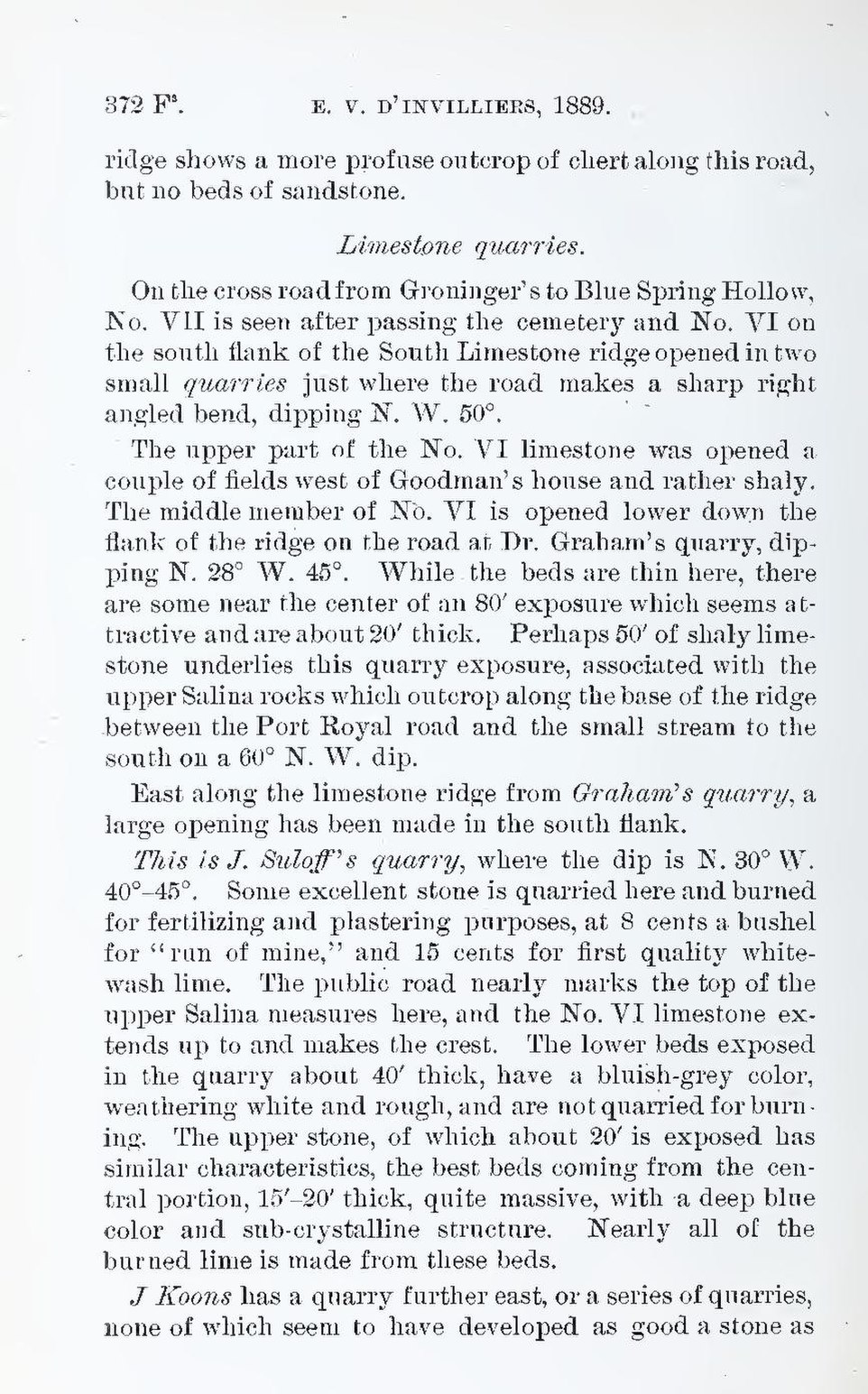ridge shows a more profuse outcrop of chert along this road, but no beds of sandstone.
Limestone quarries.
On the cross road from Groninger’s to Blue Spring Hollow, No. VII is seen after passing the cemetery and No. VI on the south flank of the South Limestone ridge opened in two small quarries just where the road makes a a sharp right angled bend, dipping N. W. 50°.
The upper part of the No. VI limestone was opened a couple of fields west of Goodman’s house and rather shaly. The middle member of No. VI is opened lower down the flank of the ridge on the road at Dr. Graham’s quarry, dipping N. 28° W. 45°. While the beds are thin here, there are some near the center of an 80′ exposure which seems attractive and are about 20′ thick. Perhaps 50′ of shaly limestone underlies this quarry exposure, associated with the upper Salina rocks which outcrop along the base of the ridge between the Port Royal road and the small stream to the south on a 60° N. W. dip.
East along the limestone ridge from Graham’s quarry, a large opening has been made in the south flank.
This is J. Suloff’s quarry, where the dip is N. 30° W. 40°–45°. Some excellent stone is quarried here and burned for fertilizing and plastering purposes, at 8 cents a bushel for “run of mine,” and 15 cents for first quality whitewash lime. The public road nearly marks the top of the upper Salina measures here, and the No. VI limestone extends up to and makes the crest. The lower beds exposed in the quarry about 40′ thick, have a bluish-grey color, weathering white and rough, and are not quarried for burning. The upper stone, of which about 20′ is exposed has similar characteristics, the best beds coming from the central portion, 15′–20′ thick, quite massive, with a deep blue color and sub-crystalline structure. Nearly all of the burned lime is made from these beds.
J Koons has a quarry further east, or a series of quarries, none of which seem to have developed as good a stone as
